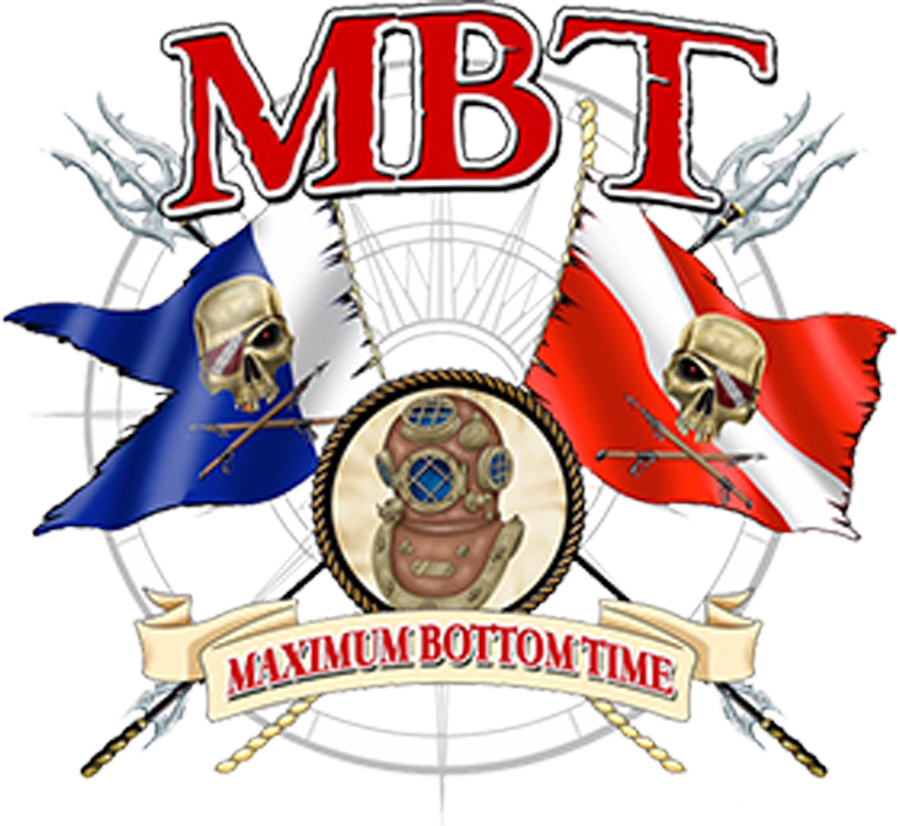Off Shore Sites
Depths of 85' - 130' 2 Tank Dive $200
Chevron Rig
- DEPTH: 134ft
- DISTANCE FROM SHORE: 18NM off the coast
- COORDINATES: 30 04.242N’, 087 02.120’W
- SHIP SPECS: Two large platform jackets, side-by-side
- LIFE SPAN: Intentionally sunk in 1993
- BRIEF HISTORY: In 1979 the “Rigs to Reef '' program began to retire natural gas and oil structures (platforms) were placed in offshore sites to create reefs. The Chevron Oil Co. donated the two large platforms for the program. The upper section of the rigs set 50 ft off the sand making this a deeper dive, for those with some experience diving. You can typically find good visibility with large schools of fish including amberjacks.
MRP Report 003 pp. 154
YDT 15 – USS Suitland
- DEPTH: 98 - 100ft
- DISTANCE FROM SHORE: 18NM S.E off the coast
- COORDINATES: 30 05.267’N 087 09.55’W
- SHIP SPECS: 132.5ft steel-hulled US NAVY Vessel
- LIFE SPAN: 1943 - 2000
- BRIEF HISTORY: The ship was originally placed in the 3rd Naval District at New York City as a self-propelled covered lighter No. 336 with the name YF-336. She was reassigned to the Potomac River Naval Command. In 1965 she was named Suitland at the 5th Naval District, Norfolk, VA. In 1971 she was redesigned as a diving tender, YDT-15. The decking and bridge were removed to make the wreck safer for recreational divers. The upper structure of the wreck can be found at 75ft. It is #4 with YDT-14 on the panhandle shipwreck trail.
MRP Report 003 pp. 170-171
YDT 14 – USS Phoebus
- DEPTH: 100ft
- DISTANCE FROM SHORE: 18NM S.E off the Pensacola Pass
- COORDINATES: 30 05.330’N, 087 09.64’W
- SHIP SPECS: 132.5ft steel-hulled US NAVY Vessel
- LIFE SPAN: 1942 - 2000
- BRIEF HISTORY: The ship was originally placed in the New York Navy Yard as a self-propelled covered lighter 294 with the name YF-294. During WWII she was assigned to the 10th Naval district as an inter-island supply vessel. She was reassigned to the 5th naval district in 1947 and was given the name Phoebus and redesigned as a diving tender, YDT-14. She was intentionally sunk next to the YDT-15. The upper structure of the wreck can be found at 65ft. Barracuda can typically be found enjoying this site. It is #4 on the panhandle shipwreck trail.
MRP Report 003 pp. 169-170
Avocet
- DEPTH: 100 – 120ft
- DISTANCE FROM SHORE: 20NM off the coast
- COORDINATES: 29 58.369’N, 087 12.603’W
- SHIP SPECS: 247ft length, 40ft beam, separated in two sections
- LIFE SPAN: 1943 - 1991
- BRIEF HISTORY: The Avocet is a 2,640-ton clamshell dredge that was intentionally sunk to become an artificial reef site #20. At one point the hull was intact; however, over time it has been split into two sections approximately 7ft apart. The upper structure is accessible at 70ft.
MRP Report 003 pp. 151
Antares
- DEPTH: 130 – 140ft
- DISTANCE FROM SHORE: 20.9 NM on a 165-degree course from buoy 12 in Pensacola Pass
- COORDINATES: Between 30 00.582’N, 87 07.775’W & 87 07.768’W
- SHIP SPECS: 387ft steel hulled freighter
- LIFE SPAN: Intentionally sunk in 1995
- BRIEF HISTORY: Before being broken apart by hurricanes the Antares was one of the largest intact artificial reefs in Florida. The stern is the only section still intact and can be reached at around 90ft, the stack is still intact and can be reached at 70ft. This is a great dive; however, it is very deep and penetration into the structure can be extremely dangerous, putting this wreck into an Advanced Diver category.
MRP Report 003 pp.158-159
Tenneco Rig
- DEPTH: 175ft
- DISTANCE FROM SHORE: 22NM S. SE. off the Pensacola Pass
- COORDINATES: 19 59.721’N, 087 05.141’W
- SHIP SPECS: Two 500-ton structures
- LIFE SPAN: Sunk 1982
- BRIEF HISTORY: The Tenneco Oil Rig was brought 275 miles to its final resting place by barge. This is the first use of a complete platform as an artificial reef. Recreational diving should be limited to the upper sections of the structure due to its depth but is a wonderful location for technical dive training containing an abundance of marine life.
MRP Report 003 pp. 139
*All dives require dive computers or watches.*
